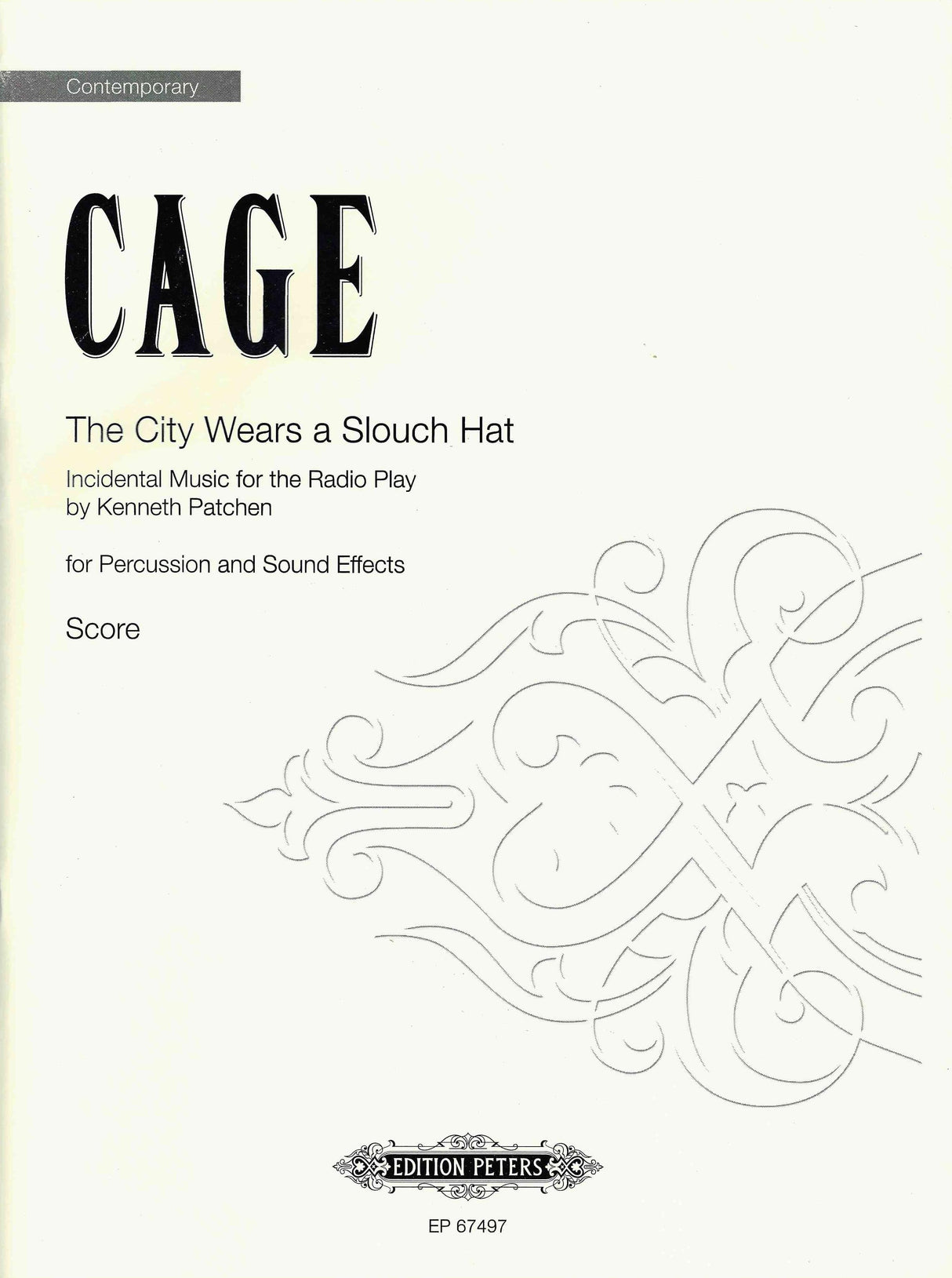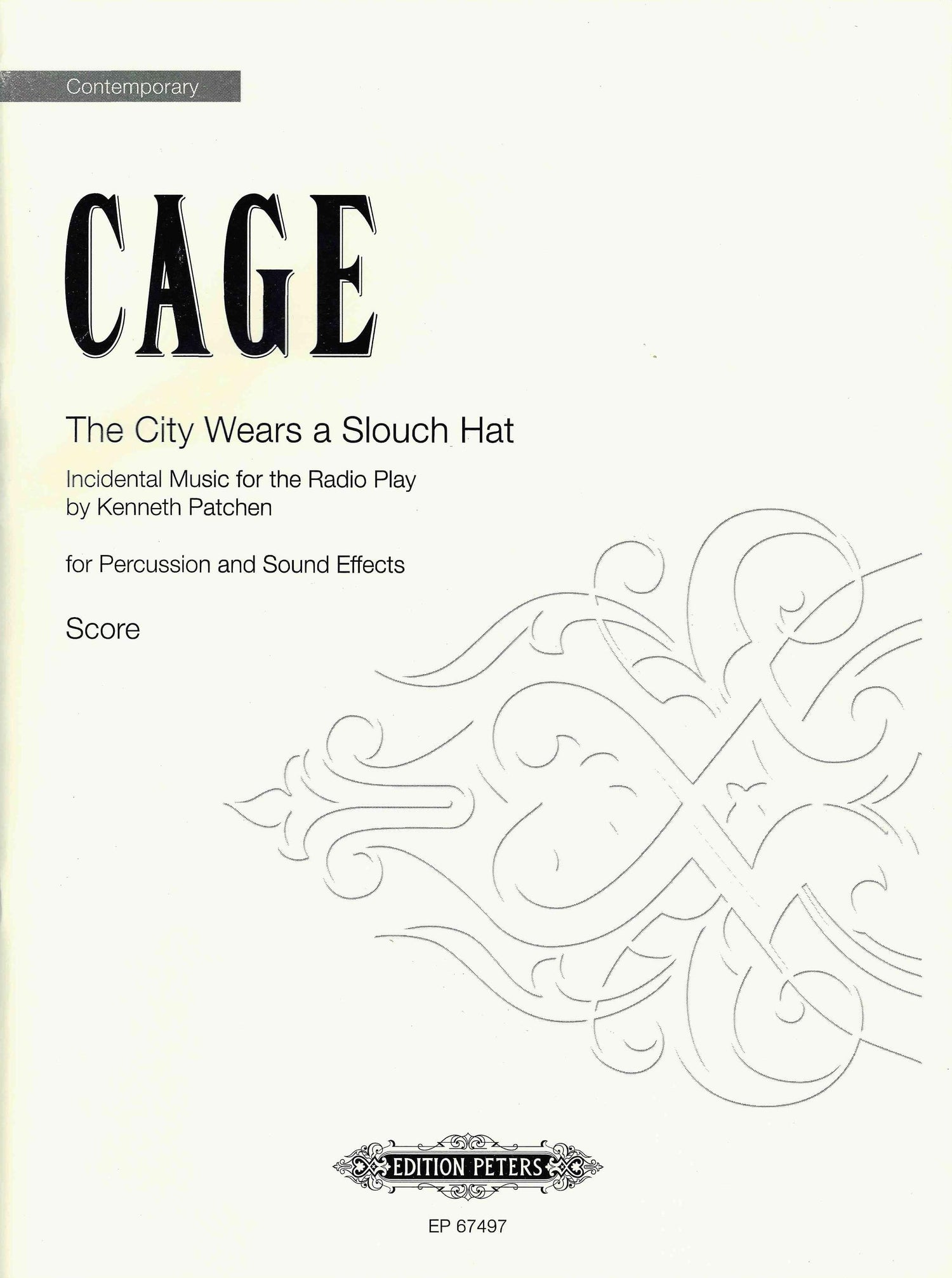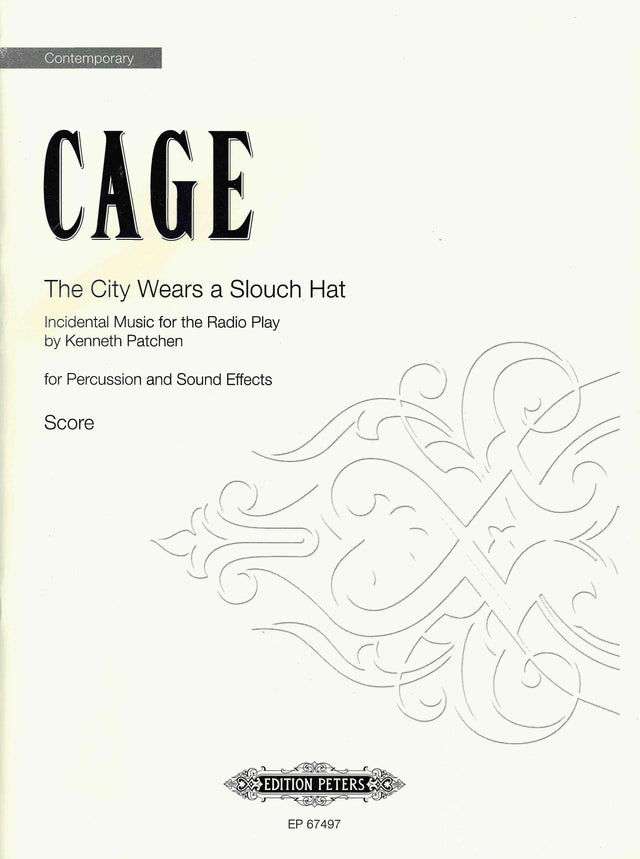John Cage
Cage: The City Wears a Slouch Hat
- Composer: John Cage (1912-1992)
- Format: Full Score
- Instrumentation: Percussion
- Work: The City Wears a Slouch Hat (1942)
- ISMN:
- Size: 9.1 x 11.9 inches
- Pages: 80
Description
Music for a radio play by Kenneth Patchen (1942) for Percussion and Sound Effects
John Cage moved to Chicago in 1941, and received a commission from the local CBS radio affiliate to write what turned out to be his only explicit musical setting of dramatic text. Cage's finished score was longer than the program's run time, and a week before the May 1942 performance he hastily rewrote the score to fit it.
The editor of this edition, John Kennedy, is a member of Essential Music, the performance ensemble who resurrected this work in 1990 after Cage's finished manuscript (originally kept by CBS, who commissioned the work) was found in the storage of the New York Library for the Performing Arts. for that performance, the ensemble compared the recording and manuscript to Cage's draft, and this edition reflects the version before Cage made cuts to fit the work into the radio play's allotted 30 minutes.
Says Kennedy: "Kenneth Patchen's rather surreal script chronicles the wanderings of a mysterious and rootless drifter named 'The Voice' as he encounters various characters and scenarios in the urban landscape. 'The Voice' exhibits clairvoyant power on more than one occasion, casually dismisses the mundanity of everyday life, and pulls from his memory quotations of Sixteenth Century poetry by Christopher Marlowe and John Donne. Yet we can't be sure of the stability of his wisdom: his manner evokes the contemporary homeless person who rejects the functions of society while clinging to a painful love of life. The play ends with 'The Voice' having found a friend and some peace on a rock in the ocean, an island apart from the noise of the city."
Publishers use a lot of words to describe what they sell, and we know it can be confusing. We've tried to be as clear as possible to make sure you get exactly what you are looking for. Below are descriptions of the terms that we use to describe the various formats that music often comes in.
Choral Score
A score for vocalists that only contains the vocal lines. The instrumental parts are not there for reference. Generally, cheaper than a vocal score and requires multiple copies for purchase.
Facsimile
Reproductions of the original hand-written scores from the composer.
Full Score
For ensemble music, this indicates that the edition contains all parts on a single system (there are not separate parts for each player). In larger ensembles, this is for the conductor.
Hardcover
Hardbound. Generally either linen-covered or half-leather.
Orchestral Parts
Similar to a wind set, this is a collection of parts. In the case of strings, the numbers listed are the number of copies included, though generally these are available individually (often with minimum quantities required).
Paperback
When publishers offer multiple bindings (e.g. hardcover) or study scores, this is the "standard" version. If you're planning to play the music, this is probably what you want.
Performance / Playing Score
A score of the music containing all parts on one system, intended for players to share. There are not separate parts for each player.
Set of Parts
For ensemble music, this indicates that there are separate individual parts for each player.
Solo Part with Piano Reduction
For solo pieces with orchestra, this is a version that contains a piano reduction of the orchestra parts. For piano pieces, two copies are typically needed for performance.
Study Score
A small (think choral size) copy of the complete score meant for studying, and not playing. They make great add-ons when learning concertos and small chamber works.
Vocal Score
A score prepared for vocalists that includes the piano/organ part or a reduction of the instrumental parts.
Wind Set
For orchestral music, this is a collection of wind and percussion parts. The specific quantities of each instrument are notated.
With Audio
In addition to the printed music, the edition contains recordings of the pieces. This may be an included CD, or access to files on the internet.
With / Without Fingering (Markings)
Some publishers prepare two copies - a pure Urtext edition that includes no fingering (or bowing) suggestions and a lightly edited version that includes a minimal number of editorial markings.




